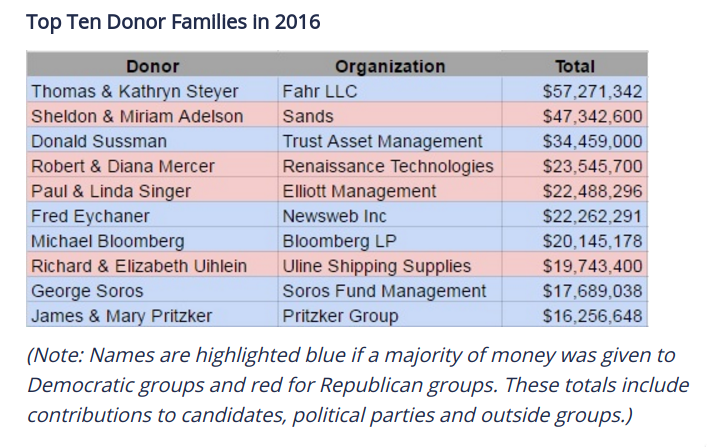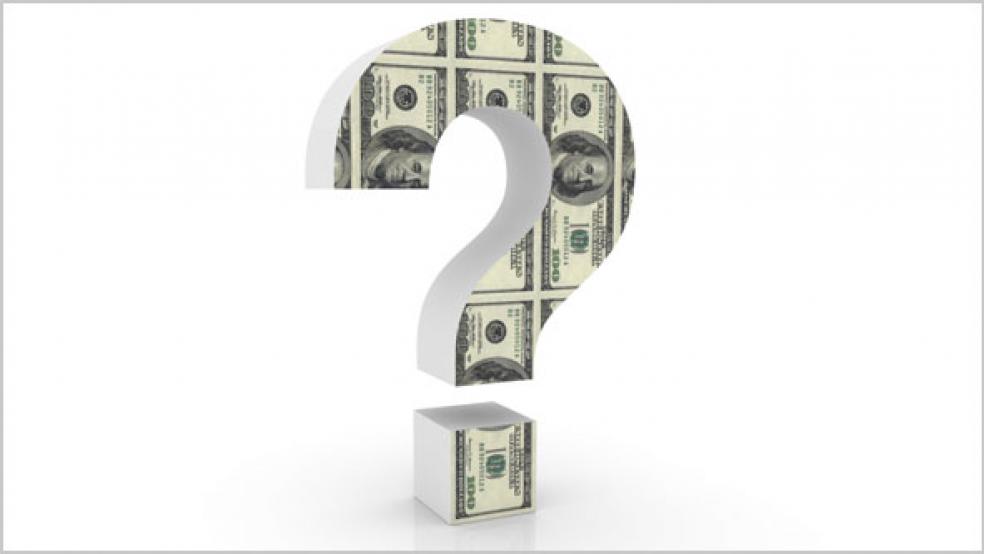For all the time presidential candidates like Bernie Sanders and Donald Trump spent during the early months of 2016 touting their small-dollar fundraising, the reality of the 2016 election is that deep-pocketed mega-donors were exerting more influence than ever over US elections.
Not only is 2016 on track to be the most expensive campaign cycle in history according to a new analysis from the Center for Responsive Politics, but the percentage of campaign spending that originates with extremely wealthy families has nearly doubled since 2012.
Related: 3 Reasons Clinton Needs to Start From Scratch if She’s Elected
So far in this cycle, according to data the Center gathered from Federal Elections Commission filings, $5.5 billion has been spent on the presidential and congressional races so far. And, considering that there is typically an explosion of spending in the final weeks of the campaign, the Center estimates that the total will be somewhere close to $6.6 billion by the time votes are all counted.
The share of that money coming from the 100 families making the largest donations was 11.9 percent, nearly double the 5.6 percent rate from the 2012 cycle.

In a change that some might find surprising, the top ten families spending money on this campaign skew slightly Democratic, with six of the top ten giving primarily to GOP causes. That difference could grow in the final weeks of the campaign, the report notes because Facebook co-founder Dylan Moskowitz has pledged $35 million to help defeat Republican presidential nominee Donald Trump.
The largest overall increase in spending on this election has come from groups separate from actual campaigns, the Center found. “The groups have spent $93.7 million more than at this point in 2012. House races accounted for the biggest jump in outside spending, percentage-wise; outlays went from $67 million at this point in 2012 to $120 million this year.”
Related: Silicon Valley Is Making Peter Thiel Pay for Supporting Trump
The analysis continued, “In total, outside groups have accounted for 26.8 percent of all spending so far, compared to 24 percent at the same point in 2012. They have poured in an estimated $1.3 billion, which is $190 million more than in the entire 2012 election. A majority, or 56 percent, of that spending came from Republican groups, compared to 37 percent for Democratic groups.”
Interestingly, the “dark money” groups that were the object of so much concern in 2012 and 2014, because of their ability to hide the identity of their contributors, have been much less of a factor this year. After spending $232 million at this point in 2012, they have only laid out about $132 million in 2016.
“In a campaign that has broken new ground in lots of ways, there’s at least one thing we can depend on, and that’s record-breaking spending on U.S. elections,” said Sheila Krumholz, the Center’s executive director.
“While this campaign saw the rise of the small donor and a fall in spending reported by groups that hide their donors, overall, important trends hold true: More money is still coming from a tiny set of elite donors. It’s going to super PACs that are scarcely independent of the campaigns they support. And it’s targeting competitive races where the vote will be closest and the opportunity to have an impact, greatest.”





